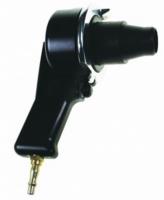 Add My Company
Add My Company
Sign In

All pipe work naturally collects unwanted debris over a period of time. Blockages in industrial pipework, drains and our sewage system require effective and budget friendly solutions to avoid having to replace an entire pipe. The sheer level of pipework in everyday life and in our industries is almost unimaginable. There are pipes in agriculture, hydraulics, off-shore drilling, beverage lines, food production lines, power line insulators, machinery and vehicles. The list is endless. As a result, a whole industry has become dedicated to the cleaning and maintenance of pipes and hoses.
The rise of high pressure
The steam pressure washer, known as the ‘high-pressure Jenny’ was invented by Frank Ofeldt in the United States in 1927. The first modern hot-water, high-pressure washer was invented by Alfred Kärcher in 1950. It revolutionised the cleaning industry.
Modern cleaning technologies, including high pressure cleaning, developed as a means of removing surface contaminants, and also in response to increasing demands for better hygiene and cleanliness. Since then technology has become more sophisticated, and it’s not just exterior surfaces that have benefitted from technological advancements.
Domestic versus commercial
Commercial pressure cleaners are designed with better engines, better pumps and better components. Domestic counterparts, while useful for cleaning decking, driveways and patios, don’t have the same life expectancy as commercial washers, which enable longer and more frequent use. The commercial development of pressure cleaners has led to many specialised types of systems.
The basics of a pressure washer
A basic pressure washer consists of a motor, a water pump, a high pressure hose and a trigger gun. In the same way a nozzle on a garden hose is used to increase water velocity, a pressure washer creates high pressure and velocity. Different nozzles can be used for different applications and some allow the introduction of a detergent. It works by the motor driving the pump which forces the water through the hose at high pressure.
Projectile jet cleaners
Industrial projectile jet cleaners use compressed air or water pressure to launch a cleaning/polymer projectile. This is fired down the blocked pipe or hose to remove dirt, swarf and deposits. High pressure forces the polymer down the tube, creating a kinetic energy, which knocks dirt and deposits away. Industrial hose and pipe cleaning systems are able to negotiate bends, complicated pipe systems and hose coils.
Projectiles consist of foam plugs (flexible polyurethane), abrasive projectiles (polyurethane foam with an abrasive pad on the front end), and grinding projectiles (polyurethane foam with an aluminumoxide coating).
Hydroblasting
Industrial pipe cleaning often uses a technique known as blast cleans, or hydroblasting. Flusher and vacuum units continually deliver pressurised water. It relies entirely on the energy of water striking a surface to achieve its cleaning effect. Abrasives are not used in hydroblasting systems, eliminating the need for the disposal of spent abrasives.
Safety
Jet washers are dangerous tools. It’s essential that they are operated in adherence to safety instructions and have been manufactured to ISO industry standards.
For more information on Everything you need to know about high pressure pipe cleaning talk to Applications Engineering Limited
Enquire Now
List your company on FindTheNeedle.

